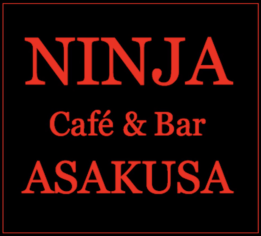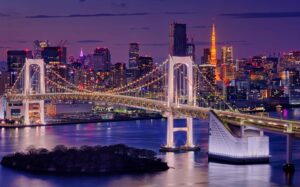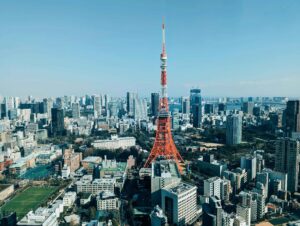Ginkakuji: The Silver Pavilion of Kyoto
You've been to Kinkakuji, the gold pavilion.
Next stop?
Ginkakuji, the silver pavilion.
Ginkakuji is known for its simplistic beauty.
The “Silver Pavilion,” is covered with plaster rather than gold leaf, giving it a subdued appearance.
(Ginkakuji is not silver! It is a simple wooden structure.)
In addition, the Ginkakuji Garden has a beautiful karesansui (dry landscape) garden with contrasting white sand and moss, embodying the Japanese sense of beauty.
This temple attracts many people as a place where one can gain a deep understanding of Japanese culture, including Japanese architectural styles, garden culture, and Zen Buddhist philosophy.
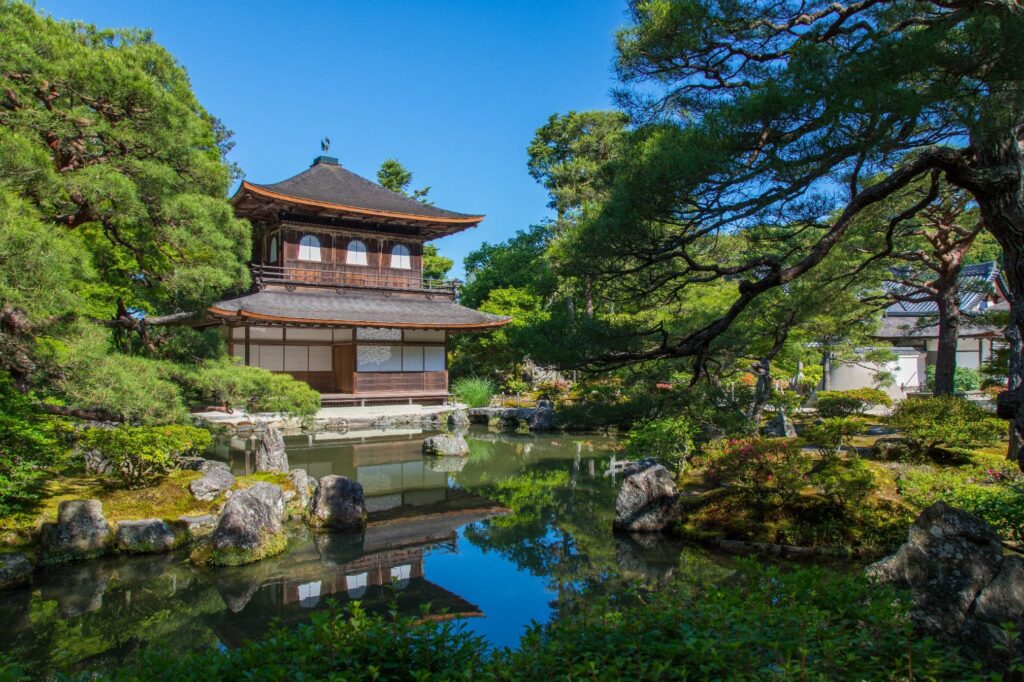
Ginkakuji Temple Official Website
Overview of the Ginkakuji Temple
【Official name】Higashiyama Jishoji Temple (Ginkakuji Temple)
【Price】Adults (high school students and above) ¥500
Elementary and junior high school students ¥300
【Telephone Number】075-771-5725
- History of Ginkakuji Temple
- A Guide to the Ginkakuji Temple
- Dining Spots in the Area
- Access
- Nearby Attractions
- Summary
1. History of Ginkakuji Temple
Officially called Higashiyama Jishoji Temple, it was built in 1482 by Ashikaga Yoshimasa (1436-1490), the most powerful shogun of the Muromachi period (1336-1573), who played a central role in political and military affairs at the time.
Originally built as a villa for the Shogun, Ginkakuji became a Zen temple after his death (1490).
Yoshimasa built Ginkakuji as a place to enjoy cultural activities such as tea ceremony, waka poetry, and ink painting, based on the Kinkakuji Temple built by his grandfather Ashikaga Yoshimitsu.
With the decline of the Muromachi Shogunate, a period of warfare began, and Ginkakuji Temple fell into disrepair.
Ginkakuji underwent a major renovation in the early Edo period (1615).
The current state of Ginkakuji is largely due to this renovation.
It is thought that the garden and architecture were restored in the style of a Zen temple, incorporating Zen Buddhism.
2. A Guide to the Ginkakuji Temple
Ginkakuji Temple offers the following attractions:
Kannon-den (Ginkaku)
This is the representative building of Ginkakuji and is designated as a National Treasure.
It is a two-storey wooden pavilion with a simple and elegant beauty.
The first floor is named “Shinku-den” and the second floor is named "Cho-on-kaku".
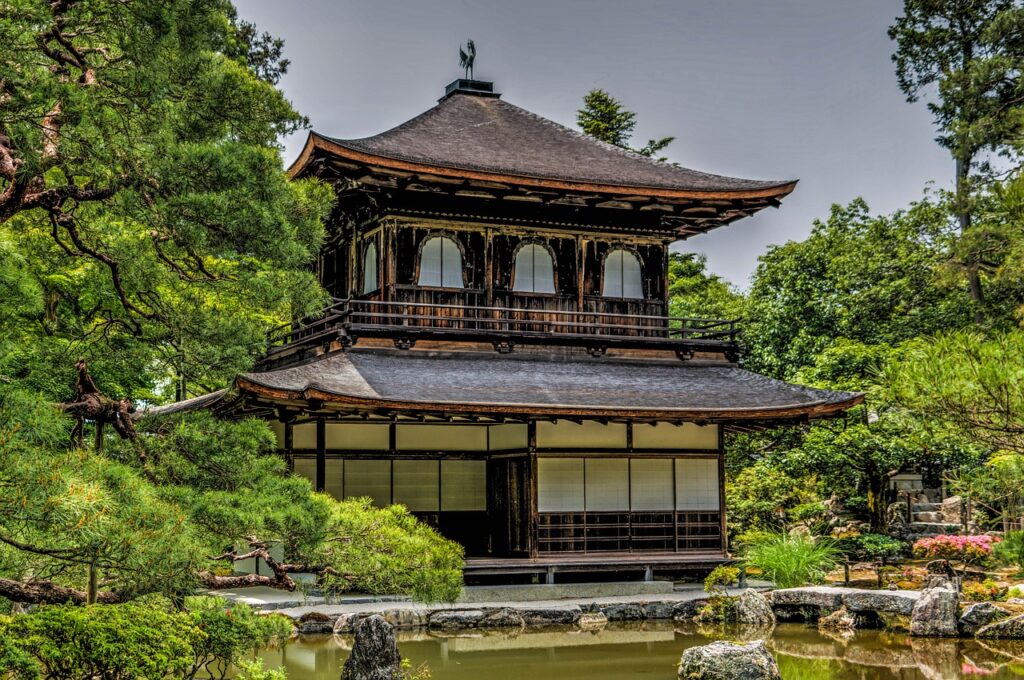
Tougudo
Designated as a National Treasure, Tougudo is a Shoin-zukuri building (a type of building in the samurai style that originated in the Muromachi period).
It was originally known as a jibutsu-do (building for storing Buddha) where Amida Nyorai was enshrined.
Tongu-do was built as a symbol of Pure Land Buddhism, and the surrounding Zen garden is a highlight of the temple.
Ginshadan
A beautiful garden with a simple appearance of white sand paved or piled high.
It is not clear what the significance of this garden, with its unique atmosphere, is.
3. Dining Spots in the Area
There are various souvenir shops and dining spots along the approach in front of Ginkakuji Temple.
Here are some of our recommendations.
Ginkakuji Matsubaya
Rest area in front of Ginkakuji Temple.
Matcha sweets and light meals are available.
Location: Ginkakuji Matsubaya, 40 Ginkakuji-cho, Sakyo-ku, Kyoto, 606-8402, Japan
Hours: Monday - Sunday 9:00 - 16:50
Phone: 075-771-5652
Ginkakuji Matsubaya Official Website
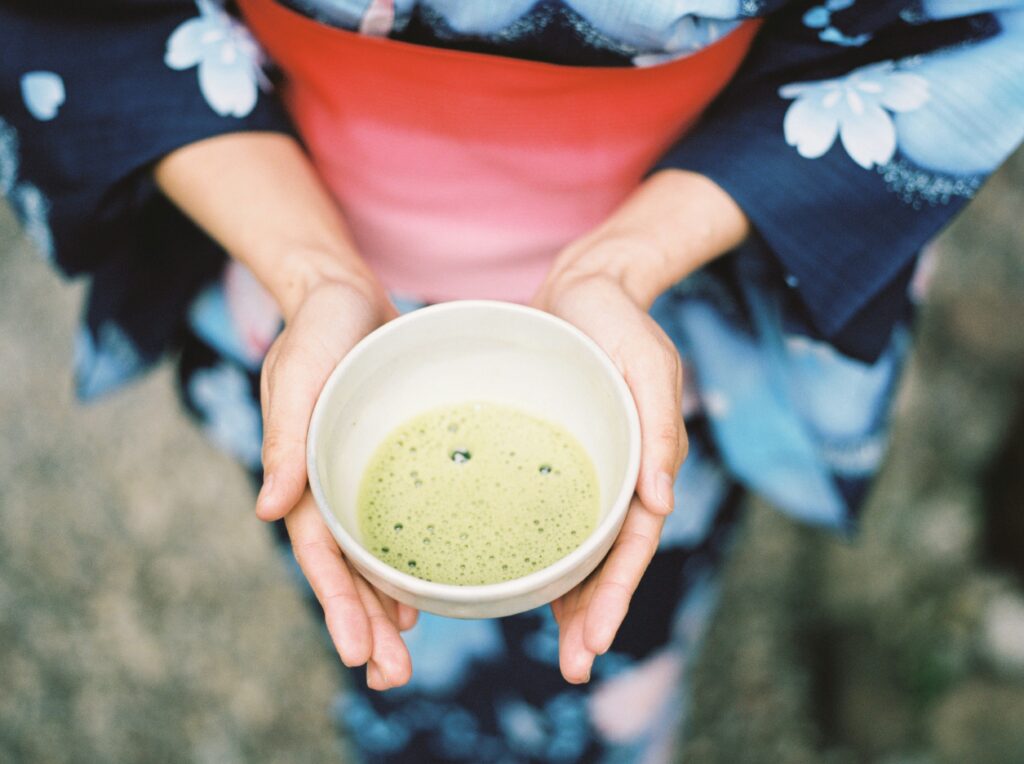
Omen Noodle Cuisin Kyoto
This is a famous udon restaurant in Kyoto.
Delicious rice noodle dishes are available.
Location: Next to the south of Ginkakuji bus pool, Sakyo-ku, Kyoto, 606-8406, Japan
Hours: Weekdays: 10:30-18:00
Weekends & Holidays: Lunch 10:30-16:00
Evening 17:00-20:30
Please check website for detailed hours.
Phone: 075-771-8994
Omen Noodle Cuisin Official Website
Daigin Shokudo
A famous local teishoku (set meal) restaurant.
You can taste Japanese home cooking. Cash payment only.
Location: 60-60 Higashida-cho, Jodo-ji, Sakyo-ku, Kyoto, 606-8411
Hours: Mon-Sun 11:30~14:30, 17:00~19:30
Closed Thursday
Phone number: 075-771-771-0692
4. Access
Ginkakuji Temple is located at the northern end of the Higashiyama area of Kyoto.
It is a 40-minute bus ride from Shijo-Kawaramachi.
Buses are convenient to get to Ginkakuji Temple.
・Kyoto City Bus “Ginkakuji-michi” stop
・Kyoto City Bus “Ginkakuji-mae” stop
5. Nearby Attractions
The famous sightseeing spot around Ginkakuji Temple is Philosopher's Path.
Philosopher's Path is famous for its cherry blossoms.
The Okazaki area, a 20-minute bus ride from Ginkakuji Temple, is home to the Kyoto Municipal Zoo, the Kyocera Museum of Art, the Keage Incline, and Nanzenji Temple.
Kyoto City Zoo is the second oldest zoo in Japan and has been in operation for 120 years.
It is a place where even children can enjoy themselves.
Kyoto City Zoo Official Website
At the Kyocera Museum of Art, visitors can enjoy various genres of art.
Kyocera Museum of Art Official Website
The Keage Incline and Nanzenji Temple are famous for cherry blossoms and autumn leaves.
Taking pictures on the railway tracks used in the past is popular.
Nanzenji Official Website
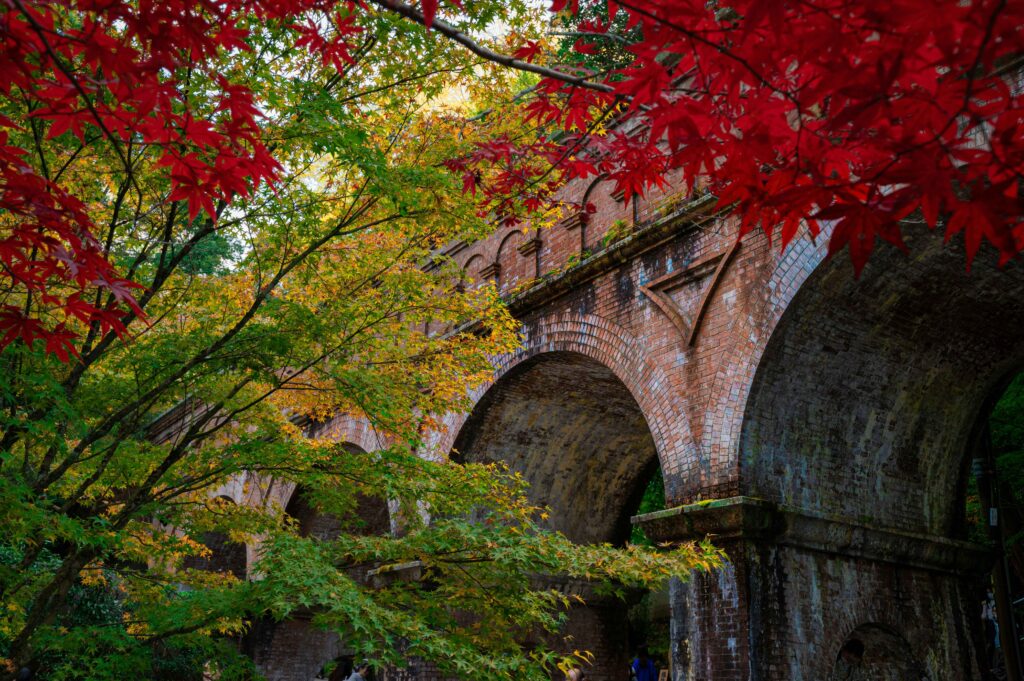
6. Summary
Ginkakuji Temple is the perfect place to experience the serene beauty of Japanese art.
You can also experience the beauty of the gardens and the natural beauty of the four seasons.
If you want to enjoy beautiful Japanese architecture in Kyoto, please visit Ginkakuji Temple.
What are we?
We run Ninja Experience Cafe in Tokyo, Kyoto and Osaka, Japan.
Here you can immerse yourself in Japanese culture through experiencing ninja training.
Both adults and children are welcome to try their hand at defeating the ninja master inside the cafe.
The cafe is an indoor interactive zone, so it can be enjoyed even on rainy days.
If you are thinking "I want to be a real ninja too!” or interested in becoming a real ninja, please visit us.
Reservations can be made here.
Unauthorized copying and replication of the contents of this site, text and images are strictly prohibited.
